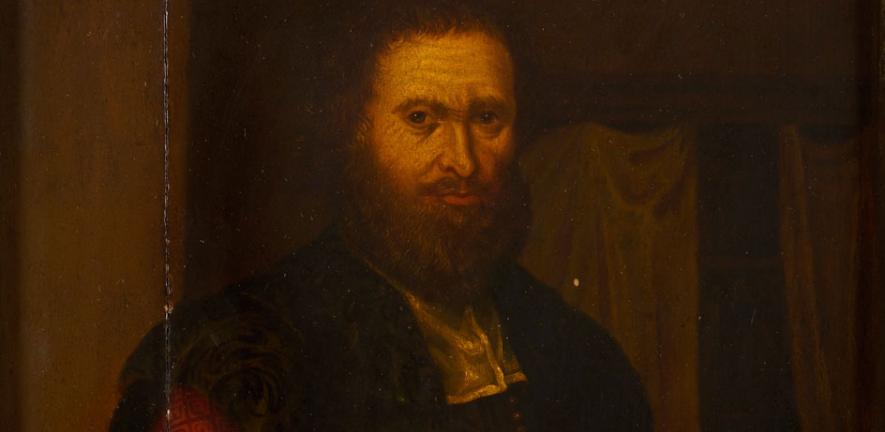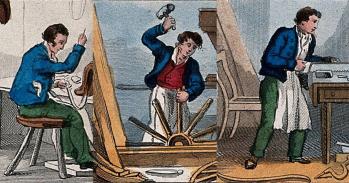
A digital resource dedicated to Simon Forman, the notorious, self-styled astrologer-physician, later dubbed the 'Elizabethan Pepys', has been launched to mark the 400th anniversary of his death.
A digital resource dedicated to Simon Forman, the notorious, self-styled astrologer-physician, later dubbed the 'Elizabethan Pepys', has been launched to mark the 400th anniversary of his death.
What we see in his records is a full, social dynamic of healing.
Lauren Kassell
The site, https://casebooks.lib.cam.ac.uk/, will eventually be home to a complete digital archive of the medical casebooks of both Forman and his contemporary, Richard Napier. Between 1596 and 1634, the pair wrote detailed notes about some 50,000 different consultations, making the collection one of the richest surviving records of medical practice from before 1700.
The Casebooks Project is being led by Dr Lauren Kassell, a senior lecturer in the Department of History and Philosophy of Science, University of Cambridge. Forman's original manuscripts are stored in the Bodleian Library, Oxford, but the electronic edition will be freely available to all, providing users with a detailed insight into the day-to-day lives of the many thousands of people who approached him for consultation - in most cases on matters concerning health and disease.
Forman was undoubtedly a legend in his own lifetime, an astrologer supposedly so gifted that, according to one account, he even predicted his own death a week before it happened, in September 1611. Yet as much as he was revered he was also loathed, spending parts of his career in prison for alleged malpractice, and sitting out its entirety on the fringes of England's nascent medical establishment.
Although he was consulted mainly on health issues, he was also approached with questions about marriage, career prospects, missing people, stolen property, travel plans, legal suits and witchcraft. Each was noted down with meticulous detail, because Forman relied on the "horary" method of astrological judgement, in which a result was determined based on the precise moment at which a question was asked.
For historians, the resulting diaries offer a rarely-paralleled catalogue of information about life during the late 16th and early 17th centuries. The historian AL Rowse, went so far as to christen the astrologer the Elizabethan Pepys.
"It's an unbelievably rich resource," Kassell said. "Forman compulsively wrote things down - not just in his casebooks, but in thousands of pages of manuscripts. What we see in his records is a full, social dynamic of healing. He was approached by whole families and households, and recorded intimate information about marital infidelity, worries about employment, and all sorts of other social and private matters that fed into people's worries about wellness and well-being."
Forman was born in 1552 in Quidhampton, an unassuming hamlet on the outskirts of Salisbury, the quiet character of which appears to have been at odds with the way in which he lived his life. By the time he settled in London in 1592, he had been captured by pirates, imprisoned by the Bishop of Salisbury, run into serious debt, pursued in vain the philosopher's stone and suffered from venereal disease.
His practice in London proved a huge success and he was consulted by more than 2,000 patients a year. Yet he also experienced continual run-ins with the medical establishment - notably the College of Physicians, which branded him the worst of the "unlearned and unlawful practitioners, lurking in many corners of the City." Desperate to secure his credentials as an astrologer-physician, he managed to acquire a doctorate from Jesus College, Cambridge. His disputes with the medical elite remained unresolved until his death, in Lambeth, eight years later.
Even from beyond the grave, Forman continued to be demonised. Four years after his death, he was linked to an alleged conspiracy to poison the poet, Thomas Overbury. This helped to establish him, in plays and other forms of popular culture, as an evil magician in league with the devil - a reputation that stuck for generations.
Although it would be an exaggeration to say that Forman's reputation has recovered in the modern age, his documentary legacy is celebrated for the sheer value of the historical evidence it provides. The horary method relied on meticulous record-keeping: A typical casebook entry begins with the client's name, age and details, the moment at which the consultation began and the question posed (typically "What is my disease?" or "Am I pregnant?") Forman then added a horoscope, mapping the positions of the 12 celestial houses at the moment the question was asked, and beneath this recorded his judgement and other information - such as a prediction or remedy.
For historians, this offers a deep insight not just into medical practice, but society as a whole. Forman recorded intimate details about his clients' private lives in the course of his consultations. His success as a practitioner is also a cause of fascination in itself; notwithstanding the College of Physicians' view of him as a quack, Forman was clearly held in high esteem by his extensive clientele.
Why this was the case remains unclear. "Clearly lots of people found solace in this treatment," Kassell said. "What they expected from a medic was far removed from what we would expect today. Forman thought of himself as a great healer, even though he had no credentials to do so. By the standards of the period, he was an appealing and successful practitioner."
One reason for his success may be the allure of the astrological information he was able to divine and the authority this gave him over his patients. Another could be the cathartic or confidential aspects of the deeply private information that his consultees were encouraged to proffer - an odd paradigm of doctor/patient trust that itself provides us with a sense of the context in which practitioners operated. Either way, Forman was clearly a seductive figure; indeed, his notes are marked with the word "Haleked" if he succeeded in literally seducing his patients.
The digital edition, which will appear in December this year to coincide with Forman's 459th birthday, will be fully annotated and searchable, giving scholars a chance, for the first time, to develop a complete overview of the archive, or any aspect of it. The site is, however, already active, and replete with information about Forman, his work, and the practice of astrologers and physicians at the time.
"At the moment taking a look at the archive is like asking someone to take a look at Africa," Kassell added. "You can't just flick through it with the naked eye - you have to get high up into space to get a sense of what it's like. For the first time, that's what this project is really enabling us to do."
The Project is live now at: https://casebooks.lib.cam.ac.uk/
This work is licensed under a Creative Commons Licence. If you use this content on your site please link back to this page.





